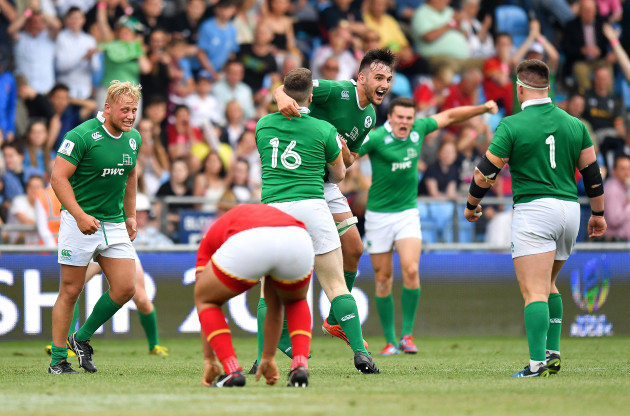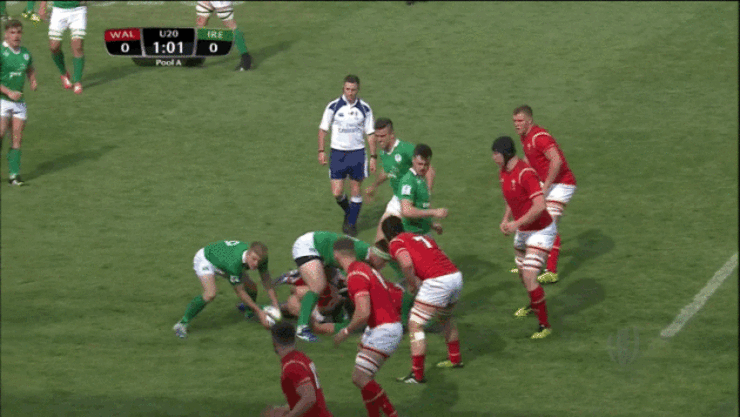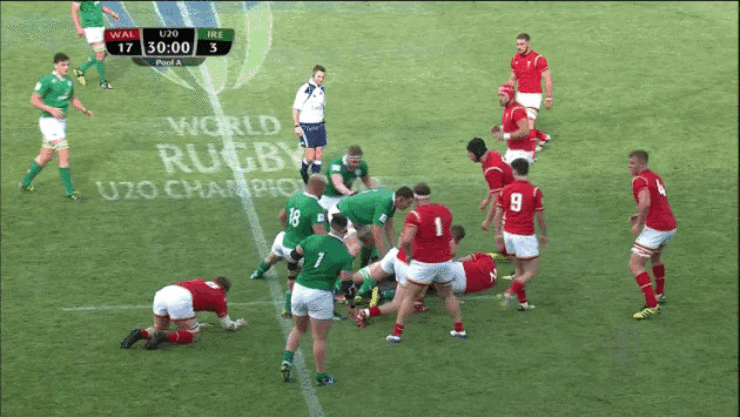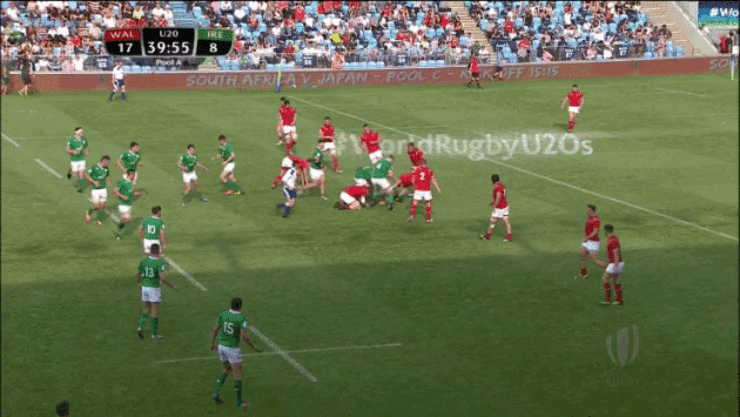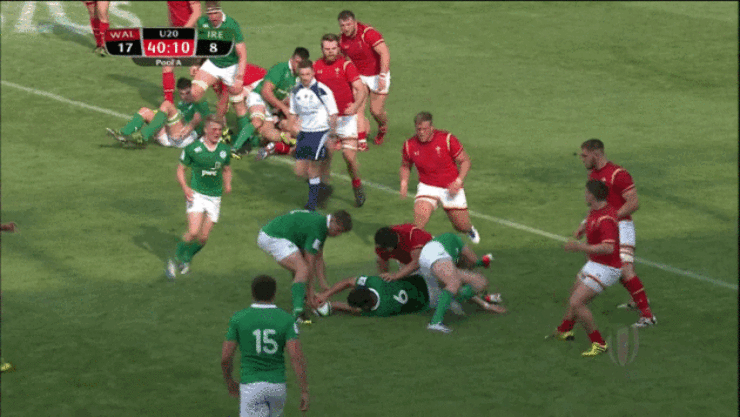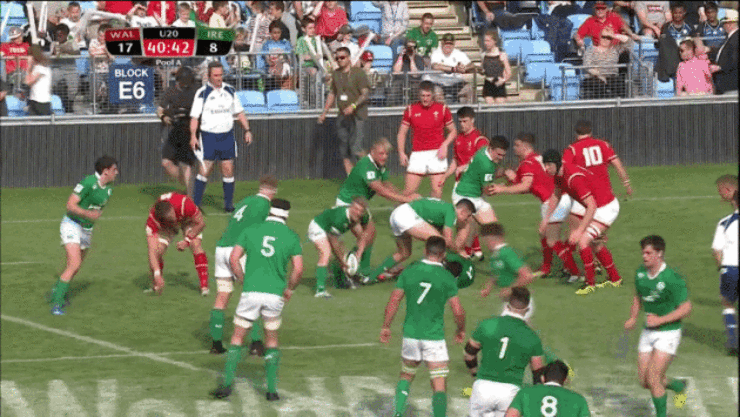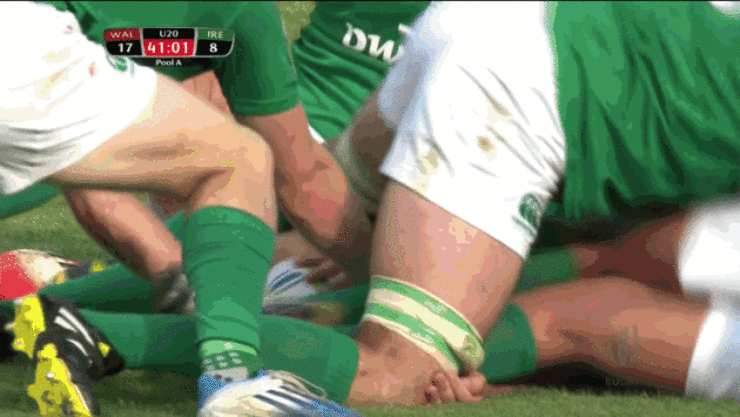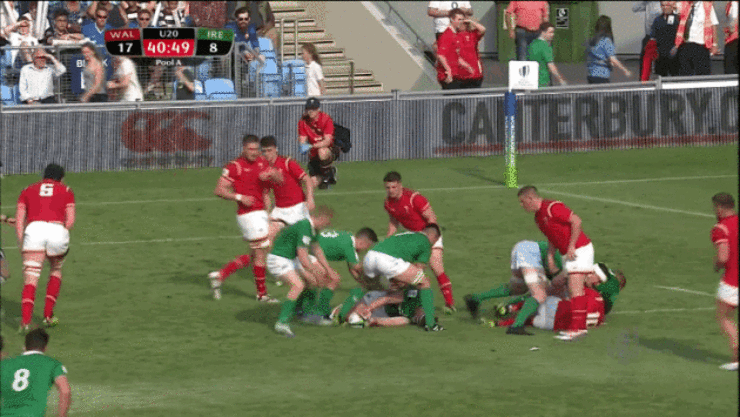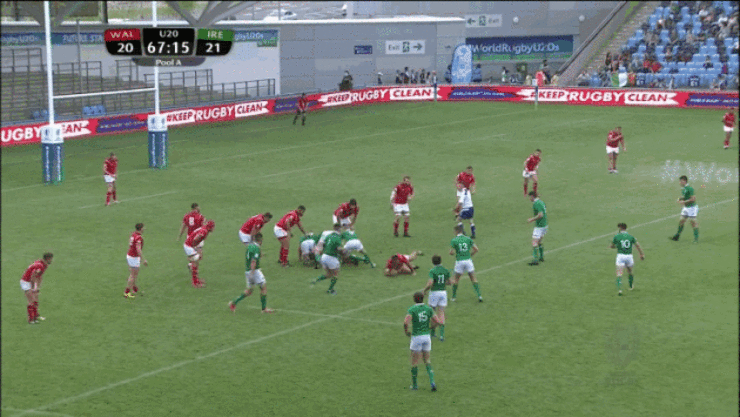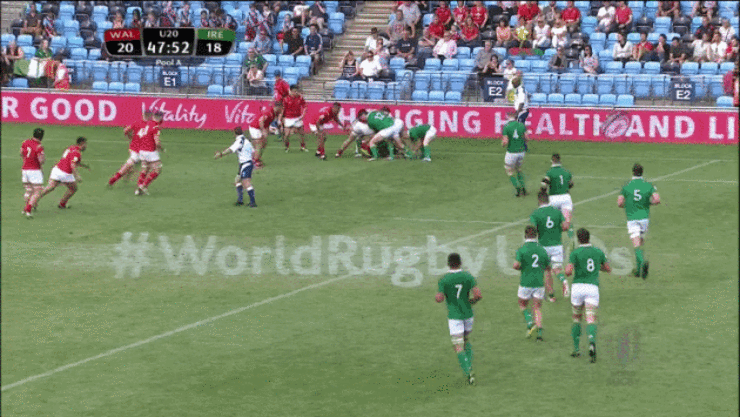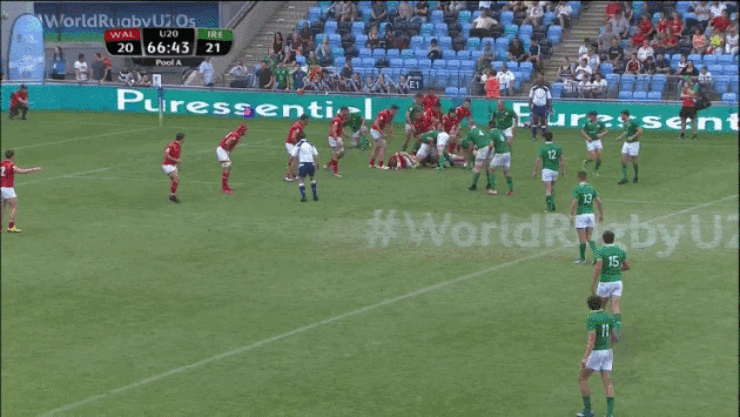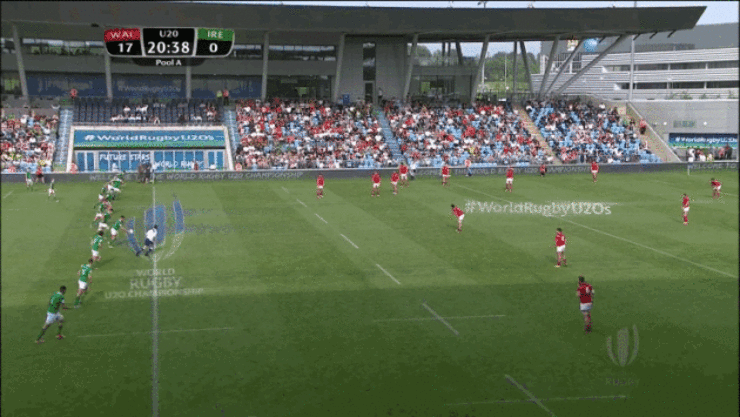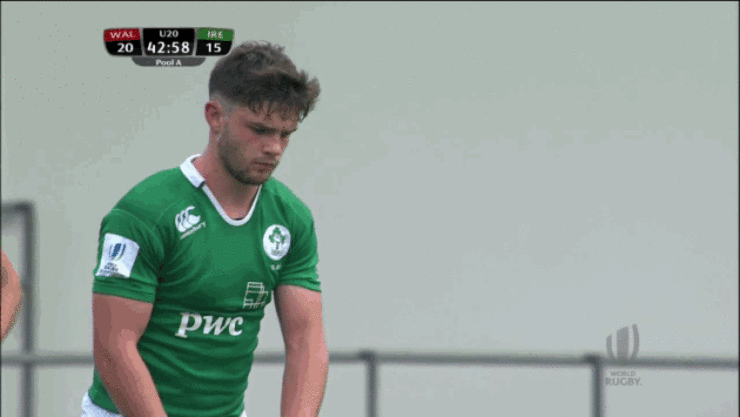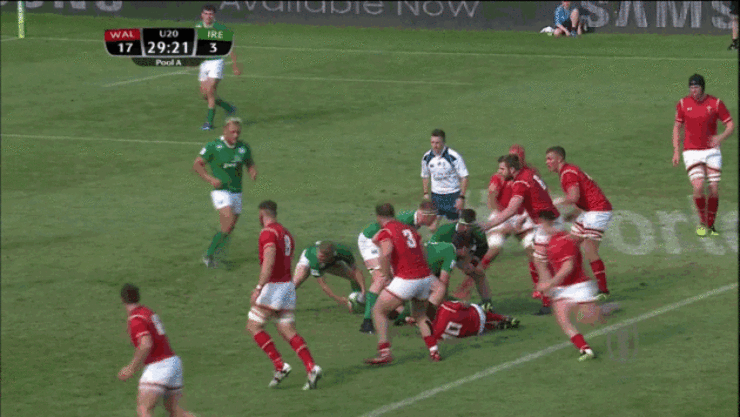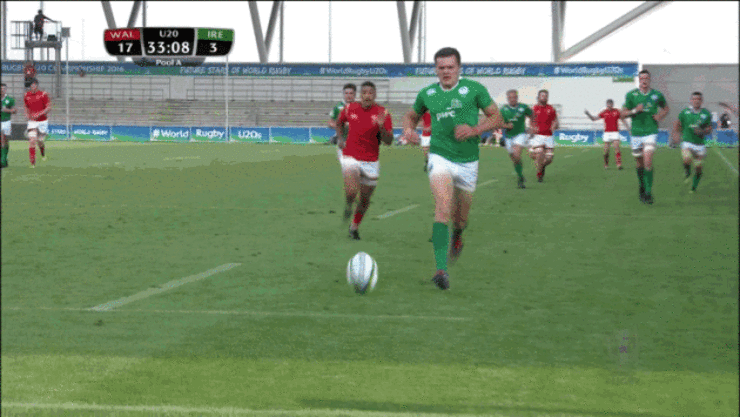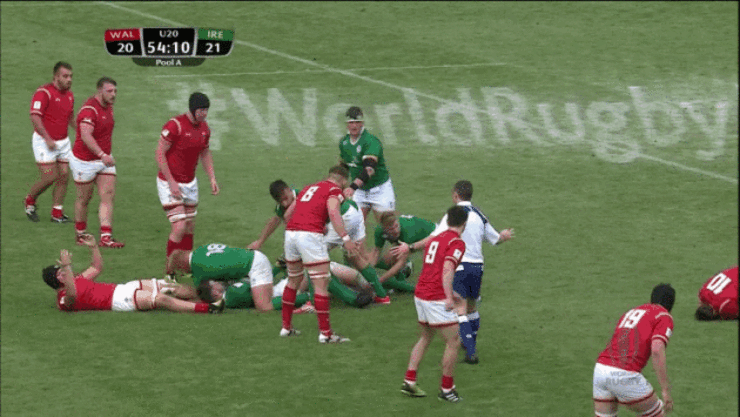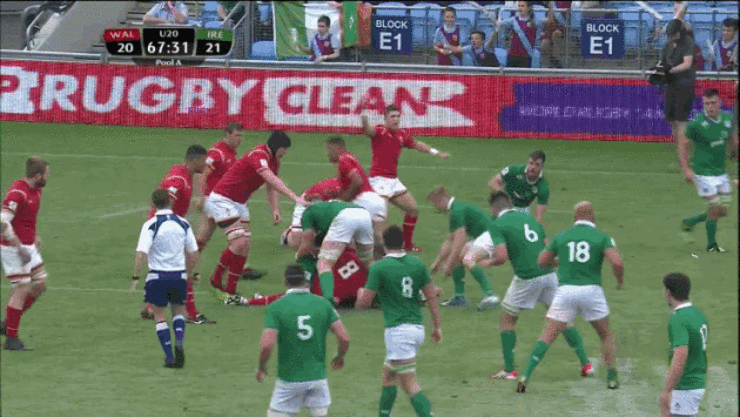THOUGH HE MISSED the Six Nations through injury, Bill Johnston picked out an important trait in the Ireland U20s as he watched on TV.
The Munster out-half, who made his debut in yesterday’s remarkable 26-25 comeback win over Wales at the World Rugby U20 Championship, noted the resilience in a team who lost their first two Six Nations games.
Beaten by Wales at home and then France away, prospects looked grim for Ireland but Nigel Carolan’s side rallied to a comeback victory away to England and finished their campaign with further wins over Italy and Scotland.
“I wasn’t involved but looking at the TV – they maybe had a rough patch in the first half but when they came into the second half and were under the pump, that’s when they answered the call really,” said 19-year-old Johnston before the World Championship.
“At the start of the second halves, when they backed themselves and were forced to play I think that’s the momentum this team rolls with.
“We’ll really back ourselves and we’re going to throw plenty of punches against these teams.”
Yesterday saw this crop of Ireland U20s demonstrate their ability to bounce back from seemingly dire situations.
Quality of carry
Ireland’s start to the clash with Wales was utterly disastrous.
A combination of a scrum penalty for driving on the angle, two lineout failings, some poor decision-making and execution of kicking, and a handling error handed Wales the platform to build a 17-0 lead in the opening 20 minutes.
Also among the failings that allowed Wales to take that commanding position was some ineffective carrying by Ireland.
It must be underlined that all of Wales’ 17 points in the first quarter also came on account of outstanding attacking and defensive work, the latter of which we see above.
Ireland number eight Max Deegan is hammered as he carries directly into two big Welsh shoulders. Carolan’s side are instantly moving backwards and scrambling to recover but give away a penalty in the process, which Wales unsuccessfully kick at goal.
Ireland’s early carrying against the Welsh was poor, but the utter turnaround in that department signified the shift of momentum in this game. After going 17-0 down, the quality of the Irish ball-carrying was one of the outstanding features of their resurgence.
Wales, much to their regret, eased off in terms of linespeed after racing so far ahead and Ireland’s forwards did not need to be asked twice to begin building momentum.
It’s Deegan who carries in the instance above, now using a sharp step off his left foot to create the space for himself and turn the situation into an advantageous one.
Ireland’s approach in attack – despite the memorable offloads we will soon look at – was largely quite narrow to the ruck as they asked their dynamic forwards to make yards off the scrum-half or through pick and jams.
Andrew Porter is the man to make the yards for Ireland in the instance above, refusing to accept the tackle of Wales hooker Dafydd Hughes as he pirouettes back inside.
A big leg drive follows and we can see Porter fighting hard with his upper body too, looking to eke out as many metres after the initial contact as possible.
These were common traits through this Irish performance, with another example from hooker Adam McBurney below.
Again, McBurney pirouettes back inside the low tackle attempt of the Welsh pillar defender – Harrison Keddie this time – and quickly regathers his feet to pump into the second tackle. Again, Ireland are right over the gainline.
In the instance below, it’s lock Cillian Gallagher who makes the carry one pass out from the ruck.
For a third time in the space of 50 seconds, we see an Irish ball carrier cleverly use their footwork to beat the tackle of a Welshman, rather than simply lumbering directly into the firm shoulders awaiting them.
The three examples above all come in the 13-phase build-up that results in Ireland’s second try through Jacob Stockdale, which we see below.
It takes a linebreak from outstanding centre Conor O’Brien to allow Ireland to actually cut through the Welsh defence, taking advantage of a missed tackle, but the hard work of the forwards over the preceding phases is essential.
The carries weren’t always about superb footwork, with some hugely direct efforts too.
The likes of Porter – above, again in the build-up to the second try – and captain James Ryan – below, shortly before Ireland’s third try – always showed sheer determination and fight to win metres even when met by well-placed defenders.
With both Porter and Ryan’s carries above we can see how Ireland generate quick ball, further stressing the Welsh defence after the strong surges.
It was the excellent variety from Ireland’s forwards in how they carried at the Welsh within their relatively simple game plan that impressed most.
Carolan’s pack had a range of tools to help themselves beyond the gainline. A simple tip-on pass from Gallagher as the Welsh defence hammers up on him allows Porter to pick out a hole in the case below.
Porter’s freakish power is, of course, crucial here but it’s smart play from Gallagher under pressure and we’ll see that the tip-on plays an integral role in Ireland’s final try too.
In the instance above, this huge carry from Porter was part of the 23-phase passage of attack that resulted in Johnston kicking a penalty for Ireland to take the lead for the first time in the game at 21-10.
Even with simple details like leeching onto ball carriers, Ireland excelled in the carry.
It’s a direct carry from Gallagher above but the leech by blindside flanker Greg Jones, driving his lock into the contact and creating something of a mismatch, ensures Ireland get more gainline and more quick ball.
We can see that Jones, having helped propel Gallagher into contact, also drives on beyond the ball once the lock has been grounded, helping to provide that quick possession.
Again, this technique was a feature of the Irish ball carrying as they brought outstanding variety to consistently keep the Welsh moving backwards.
Making kicks count
Leinster’s James Ryan has been delivering big moments all season for the Ireland U20s and is the clear standout player in this group.
His huge hit on Keddie in the 21st minute, directly after the Welsh had gone 17-0 up, was a genuine momentum-shifter in the game.
Ryan covers the ground exceptionally quickly for a player of his position and height [6'8"], something we regularly see when Ireland are defending. He brings huge aggression into contact too, and both attributes are highlighted here.
The restart from Johnston is perfect, hanging in the air long enough for Ryan to sprint forward and level Keddie ball-and-all.
So begins a period of Ireland pressure on the Welsh – their first in the game – that eventually sees Johnston pop over a drop goal to finally get Carolan’s men on the scoreboard.
Ireland had further success with a nicely-executed Johnston restart later in the game, as we see in the clip below.
This time it’s loosehead prop Porter who leads the line on the chase and draws a poorly-disguised block to earn Ireland a penalty.
Johnston slots the shot at goal to bring Ireland back to 20-18 early in the second half as their resurgence continues.
Making restarts count was important for Carolan’s side, as it is for any. They’re so often referred to as a set-piece and there are certainly big rewards for sides who can pressure the opposition with their restart strategy.
Ireland’s kicking game in general improved markedly after two poor clearance efforts inside their own 22 invited the brilliant counter-attacking try finished by Rueben Morgan-Williams.
Thereafter, Ireland become far more composed and effective in their exits, ensuring that they had bodies on their feet to chase – and that they actually connected well with their kicks.
Johnston began to search out territory in the backfield, showing fine vision and awareness, and after narrowly overcooking two kicks he found his range to great effect.
Wales thrived early in the game partly because Ireland’s kicking errors – and the other mentioned before – invited them to attack.
With efforts like the one above, Ireland’s exiting actually managed to apply pressure to the Welsh. Johnston’s kick is followed up aggressively by right wing Matthew Byrne, centre Shane Daly and fullback Stockdale.
It’s worth noting that Wales left wing Keelan Giles is up in the frontline defence. Similarly to the senior national side, the Welsh often had two players patrolling the backfield, rather than having their wings drop deeper to cover possible kicks.
That means fullback Rhun Williams is slightly isolated when he gathers the ball and with the immediate Irish pressure, Byrne can bundle him into touch.
Further up the pitch, Ireland also used the boot in order to pressure the Welsh.
Johnston’s kick again locates the space that is left by Giles being up in the frontline.
Fullback Rhun has a wide area of the pitch to cover across in order to compete in the air, and Byrne comes forward commandingly to win the contest.
Again, it’s tactically-intelligent play from Ireland after they have found a solution to take advantage of how the Welsh are set up to defend kicks.
Johnston’s touch with the boot is accurate and Byrne’s regather sparks the passage of attack that ends with three points for the 21-20 lead.
Breaking out
One of Carolan’s key messages to his team after the Six Nations was ensuring that they balanced risk and reward.
“Mistakes proved to be very costly,” said Carolan. “Any time we made mistakes, the consequences were quite high. We have to figure out the risk versus reward and how we can minimise the risk but still enable to play a high tempo game.”
While there were certainly many mistakes early on against the Welsh, Ireland found a better balance as the game wore on.
As mentioned above, the game plan was not particularly expansive for large parts but Ireland always had the potential to strike dangerously against the Welsh. Fullback Stockdale, whose blocked-down kick contributed to Morgan-Williams’ try, showed as much on a number momentum-gaining occasions.
The initial decision by Stockdale to run from behind his own tryline is the obvious one as he is under such intense pressure from Giles.
After beating off the challenge of Giles with a strong fend and hitch out of the tackle attempt, Stockdale has the opportunity to kick on his favoured left foot. It’s the easy thing to do after his earlier error, but the Ulsterman is a confident player.
He identifies the opportunity to attack with ball in hand.
It’s the kind of decision Carolan wants his players to make, one that is based on clear space to attack and with numbers in support. Jones cleverly links the ball to Daly, who earns Ireland an important penalty that eventually results in their first try from the maul.
As Ireland’s confidence grew throughout the game, we saw more instances of their ability to attack accurately with ball in hand.
Below, we get another fine example of Ireland identifying space and then showing thrilling skill to take advantage.
The shape to the left of the ruck from Ireland, a three-man forward pod with left wing Hugo Keenan in behind, is strong and then Carolan’s men play to where the space is.
Ryan could easily go for a direct carry in this instance but the communication of space gets to him and he tips on to Deegan, who drags two defenders in before releasing a Sonny Bill Williams-esque one-handed offload to free Daly.
The Cork Con man does superbly in tight space down the left to find centre partner O’Brien, whose clever work off the ball to shield Daly should be noted too.
Daly’s handling of the ball is sensational as he gathers low and one-handed just before he’s tackled, freeing it to the hard-working Keenan in support inside him. That the next offload attempt – from Keenan to Stephen Kerins [again, superb support] – goes to ground is a shame but again Ireland have shown their attacking talent.
It was the third Irish try that stood out most in that regard, of course.
Another tip-on pass from Jones to the dynamically-moving Deegan gets the phase underway, before the number eight releases a quite stunning offload back to the blindside flanker.
Jones shows his awareness to find Ryan coming forward, then the second row again demonstrates an understanding of space to flick the ball away to McBurney before he can be tackled, keeping the movement alive.
McBurney rides the tackle superbly, turning to find O’Brien, and the Clontarf centre picks out his pass wonderfully, floating the ball over the top to find Stockdale in space.
It’s a stunning Ireland score and certainly Carolan’s side are going to need more play of this nature if they are to compete against New Zealand in Saturday’s second pool game.
The Kiwis warmed up for that Pool A-defining contest with an impressive nine-try victory over Georgia but Ireland have demonstrated that they have the attacking skill to go along with their mental mettle.
